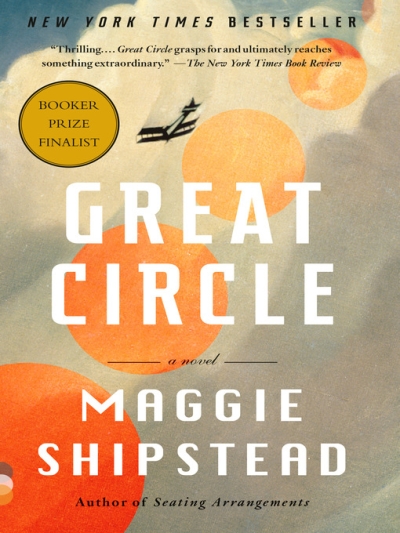
If you’re looking for a sprawling novel that spans much of the twentieth-century and enters the twenty-first, features an array of distinctive points of view and complex relationships, ventures to far-flung places, and explores big ideas, then I invite you to consider reading Maggie Shipstead’s most recent release, Great Circle (2021).
Critics and readers alike have called Great Circle “Dickensian” in its scope. Although it feels entirely of this time to me, especially in terms of tone and subject matter, I understand their meaning. This novel is as much about culture and society as it is about specific characters, the narrative plays out within the context of major historical events, including Prohibition and World War II, and the conclusion, which I found surprising and ultimately satisfying, reveals meaningful links between what may very well have seemed like disconnected elements.
Marian Graves, a complicated woman who achieves fame as a daredevil aviatrix, is the central character of Great Circle. We follow her shape-shifting development from her birth to the end of her life. She, like the book’s other central character, Hadley Baxter, become determined to define their own lives, despite all constraints. The constraints may seem different on the surface—Hadley’s sections are set approximately sixty years after Marian’s—but in essence their concerns and conflicts are shared.
Maggie Shipstead’s Great Circle is a challenging novel for many reasons. I think a deeper edit would have served it well. But it is a terrific book to read in tandem with others—it will leave you and your friends with a lot to discuss. And if you prefer to read solo, no worries. There is a lot to reflect upon in these many pages.